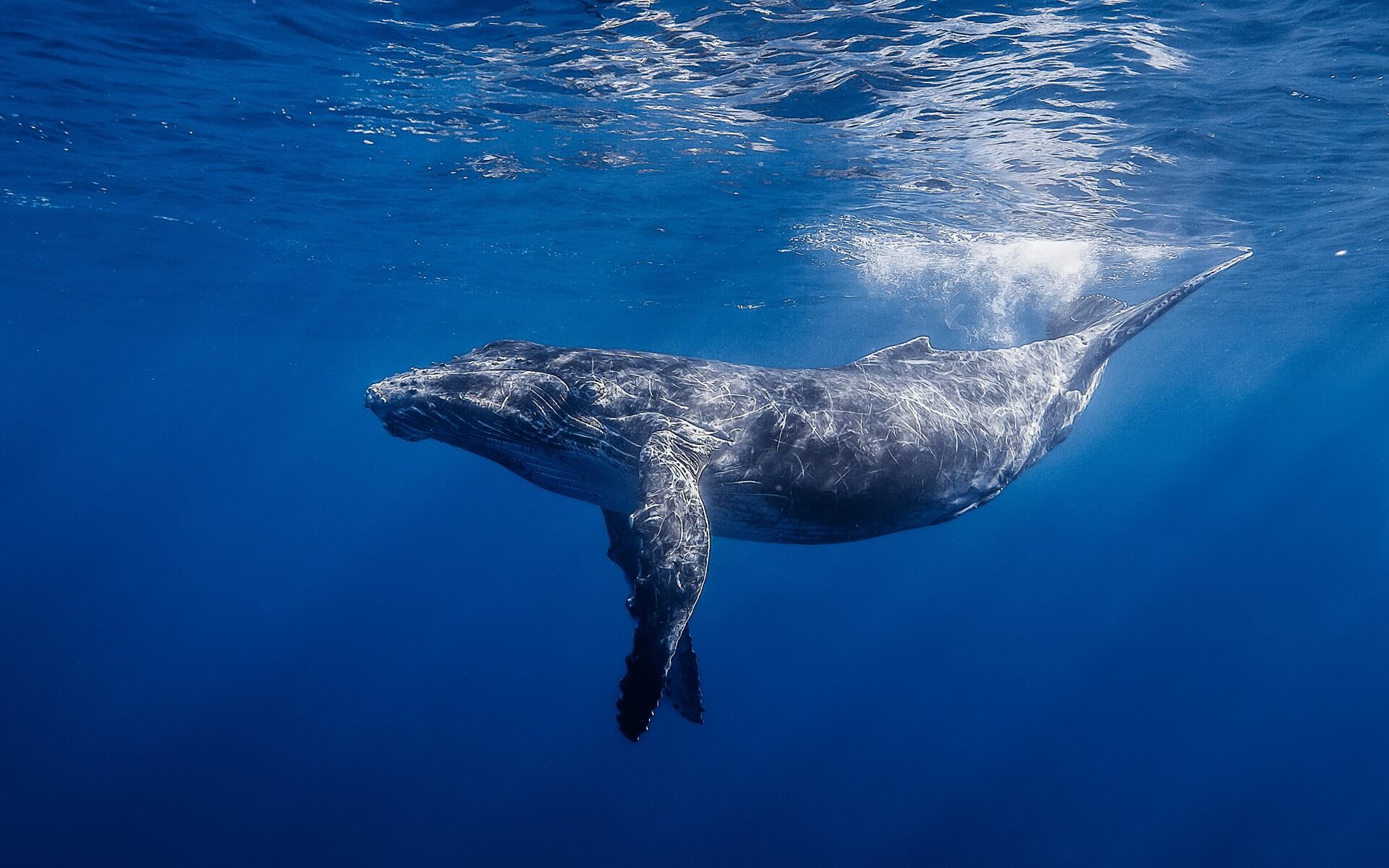Pacific Islands
ISLAND ADVENTURE
Humpback whales follow a predictable path. In the past this has made them an easy prey and nearly led to their extinction. Today this behaviour enables visitors to the kingdom of Tonga to experience a truly stunning swimming experience, says Elio Stamm.
February 6, 2024
Pacific Island Living
February 6, 2024Whale Of A Time
You have to do it to understand how impressive it is. Reading the following lines might make you want to swim with the humpback whales too, but it cannot prepare you for the moment when you actually encounter these creatures, which at up to 16 metres long and 36 tons, float past you in the vast blue Pacific Ocean. It blew my mind.
It was around 10 am on a cloudy Tuesday in July. For two hours our boat had already been searching cautiously for the humpback whales around the waters of the Vava’u island group in the kingdom of Tonga.
The host of our bed and breakfast in Nuku’Alofa, Tonga’s capital, where we had stayed before flying up to the northern Vava’u island group had told us a few days earlier that she had not spotted a single whale on a similar trip. So I was more than pleased that by 10 am we had already seen four different groups of whales, surfacing, breaching, blowing out water and vanishing again.
One whale which had been jumping landed approximately 30 metres away from our boat, splashing the water up five metres into the air. Even our local guide scanning the horizon on the roof of the boat screamed at that sight.
It was exciting, but up to that point I had not been able to get into the water. First we had seen whales in a protected zone where no one was allowed to swim with them, and then, during the following three encounters, they had moved too fast. There would have been no chance to follow them but the local organising company Beluga Dive also did not want to take the risk of letting us swim next to a breaching whale.
I was a little disappointed but also glad that the company seemed to respect the animals and their space.
But then suddenly, just as I was about to convince myself that even just having seen these giants of the sea had been worth a day trip, a whale passed by directly underneath us. The guide shouted: “Into the water”, and all four of us jumped off the back of the boat.
I landed in the blue emptiness of the ocean but I could not see much. There was lots of white foam and bubbles in front of my eyes, produced by my fellow swimmers who were just as excited as I was and frantically swimming towards where we thought the whale would be.
I swallowed water. I breathed hard. I saw fins, but not those of the whales.
About 30 metres from the boat the guide made us stop. We calmed down, and then we saw them. Three humpback whales gliding up from the deep sea to get some air. No more than 15 metres away from us. It was surreal.
It was frightening. We looked at each other and we were all very happy not to be alone in the water. The whales though did not seem to care about our presence. They dived up and down, circling us and the boat.
Humpback whales surface often. We could see them again and again during the day trip exhaling in the various bays of the Vava’u islands. And although they did not do it on that particular morning, the whales tend to ‘sing’ during their courtship routines. This can be as loud as 185 decibels and be registered as far as 100 kilometres away in the open ocean. Coming back to hear them sing is definitely on my to-do list.
The whales follow a clear path and migrate up to 25,000 kilometres each year. During the southern hemisphere’s summer they feed in polar waters and then make their way to tropical or subtropical waters to breed and give birth to their calves in the winter. Tonga is one of the most important breeding grounds for humpback whales. They come here between June and November, which meant that we were swimming with them early in the season.
Seeing so many humpback whales around me made it hard to believe this majestic animal was once close to extinction. Their predictable migration pattern made them easy prey for whalers who started hunting them down for meat and oil from the early 1800s onwards. Back then the humpback population was around 150,000 worldwide. When commercial whaling was finally forbidden in 1966, there were a mere 5000 humpback whales left. Since then the population has been recovering slowly, to an estimated 80,000 today.
Swimming is obviously better than hunting, but there are still quite few critics who say this practice can disturb the mothers while raising their calves in the calm waters of Tonga. Tourists have to make up their own mind. To minimise the impact you should make sure you are accompanied by a licensed operator. There are whale-watching and swimming operators all over Tonga but the most famous spot is definitely the northern Vava’u group, with more than a dozen operators located in Neiafu, its main town.
Neiafu has some 6000 inhabitants and is situated in one of the best protected harbours in the world. This small town is world famous for yachties who use it as a base to sail around the crystal clear waters of the Vava’u group. It is also the best base for whale watchers and swimmers offering a wide range of quality accommodation.
For more information on the kingdom of Tonga, the Vava’u island group and swimming with the whales check out the official homepage of the Tongan Visitors Bureau: www. thekingdomoftonga.com
© 2024 Pacific Island Living Magazine all Rights Reserved
Website by Power Marketing